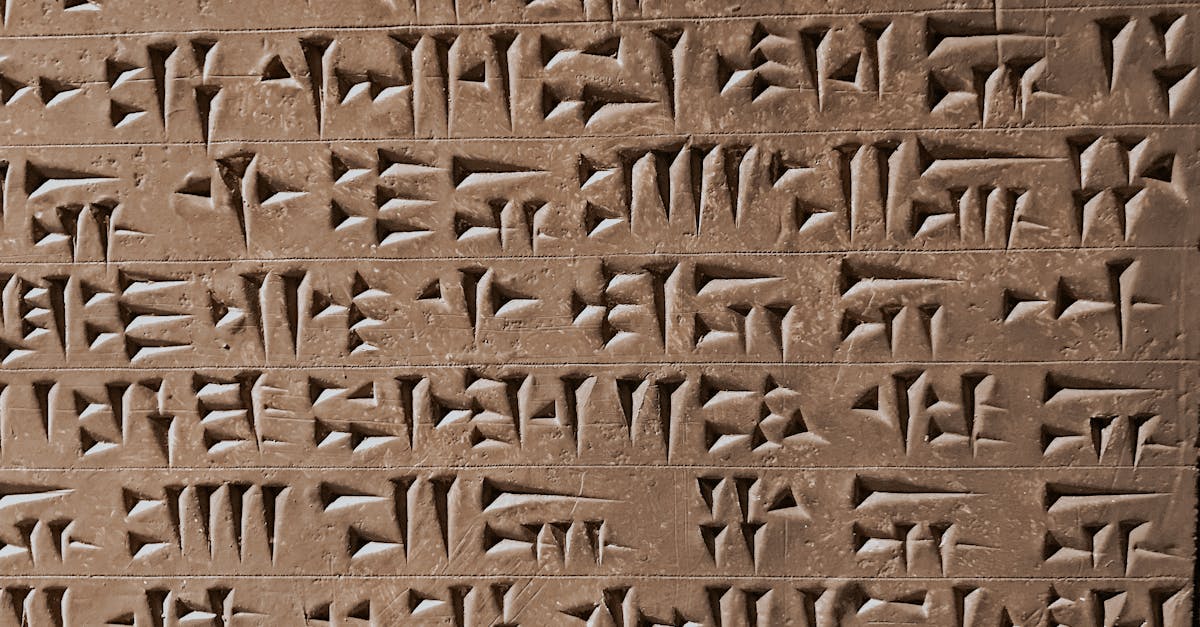The quest to determine the oldest language in the world is a fascinating journey into our shared history. Languages have evolved over millennia, and some ancient tongues have survived through generations, preserving the culture and heritage of their speakers. In this article, we will explore the seven oldest languages still in use today, highlighting their significance and unique characteristics.
| Language | Region | Estimated Origin | Current Speakers |
|---|---|---|---|
| Sumerian | Mesopotamia | c. 3100 BCE | None (extinct) |
| Egyptian | Egypt | c. 3000 BCE | None (extinct) |
| Hebrew | Israel | c. 1000 BCE | 9 million |
| Chinese | China | c. 1250 BCE | 1.2 billion |
| Arabic | Arab World | c. 600 CE | 310 million |
| Sanskrit | India | c. 1500 BCE | 25 million |
| Greek | Greece | c. 800 BCE | 13 million |
Sumerian
Sumerian is often regarded as one of the earliest written languages, originating in ancient Mesopotamia around 3100 BCE. It was primarily used in administrative and ceremonial contexts, and while it is no longer spoken today, its cuneiform script has provided invaluable insights into early human civilization. The Sumerians made significant contributions to writing, law, and mathematics, laying foundational stones for subsequent cultures.

Egyptian
The Egyptian language, particularly in its hieroglyphic form, dates back to approximately 3000 BCE. Like Sumerian, it is no longer spoken in its original form. However, the Egyptian language evolved through various stages, including Middle Egyptian and Late Egyptian, influencing the Coptic language, which is still used in some Christian communities in Egypt today. Egyptian hieroglyphs remain a crucial source for understanding ancient Egyptian culture and history.

Hebrew
Hebrew is a Semitic language with roots tracing back to around 1000 BCE. It was the language of the Jewish people and the original language of the Hebrew Bible. Although it experienced a period of decline, Hebrew was revived in the 19th and 20th centuries and is now the official language of Israel, with around 9 million speakers. Its revival is a remarkable example of language preservation and cultural resurgence.

Chinese
The Chinese language, particularly its written form, has a history that extends back to at least 1250 BCE, with the earliest known inscriptions found on oracle bones. Mandarin is the most widely spoken dialect today, boasting over 1.2 billion speakers globally. Chinese characters, which are logographic, have remained relatively unchanged for thousands of years, preserving a direct link to ancient Chinese culture and philosophy.

Arabic
Arabic emerged around 600 CE and has since become a major global language, with approximately 310 million speakers today. It is the liturgical language of Islam and has numerous dialects across the Arab world. The Arabic script is known for its beauty and complexity, and the language has significantly influenced many other languages and cultures throughout history, particularly in science, philosophy, and literature.

Sanskrit
Sanskrit, with roots dating back to around 1500 BCE, is an ancient language of India, primarily used in Hindu scriptures and classical literature. While it is considered a classical language, it is still studied and used in religious contexts, contributing to the cultural and spiritual heritage of India. Sanskrit has influenced many modern languages in the Indian subcontinent and remains a subject of academic interest worldwide.

Greek
The Greek language has a continuous history spanning over 3,400 years, with its earliest written records dating back to around 800 BCE. Ancient Greek was the language of philosophers, poets, and historians, and it has evolved into Modern Greek, which is spoken by about 13 million people today. Greek has had a profound impact on many languages, particularly in terms of vocabulary and scientific terminology.

FAQ
What is the oldest language in the world still spoken today?
The oldest language still spoken today is often debated, but Hebrew, Chinese, Arabic, Sanskrit, and Greek are among the oldest languages with continuous use and a significant number of speakers.
Is Sumerian still spoken?
No, Sumerian is not spoken today; it is considered an extinct language. It was primarily used in ancient Mesopotamia for administrative and ceremonial purposes.
How many people speak Hebrew today?
Approximately 9 million people speak Hebrew today, primarily in Israel, where it is the official language.
What is the significance of ancient languages?
Ancient languages provide valuable insights into the cultures, histories, and philosophies of civilizations. They contribute to our understanding of human development, literature, religion, and social structures.
Are there resources to learn these ancient languages?
Yes, many universities and online platforms offer courses in ancient languages such as Sanskrit, Greek, and Hebrew. Additionally, there are numerous textbooks and online resources available for self-study.
References:
– [The British Museum](https://www.britishmuseum.org)
– [The Ancient Language Institute](https://www.ancientlanguageinstitute.com)
– [The World Atlas of Language Structures](https://wals.info)
